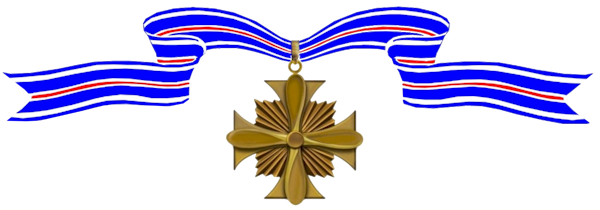The President of the United States of America, authorized by Act of Congress, July 2, 1926, takes pleasure in presenting the Distinguished Flying Cross to First Lieutenant (Armor) Thomas D. Mott, United States Army, for heroism while participating in aerial flight evidenced by voluntary action above and beyond the call of duty on 10 July 1969 while serving as a helicopter gunner with the Air Cavalry Troop, 11th Armored Cavalry Regiment, in the Republic of Vietnam. On this date he volunteered to fly with a light fire team in support of one of the regiment’s armored troops engaged with an enemy force. Despite the low night visibility, Lieutenant Mott placed accurate mini-gun and grenade fire on the hostile positions. When one of the helicopter gunships crashed, he radioed a nearby medical facility and gave directions for an evacuation helicopter. Continuing to disregard the low visibility, he remained in the area until rescue aircraft reached the crash site. First Lieutenant Mott’s courage and concern for the welfare of his fellow soldiers were in keeping with the highest traditions of the military service and reflect great credit upon himself, his unit and the United States Army.

Awards Received
-

Distinguished Flying Cross
-
Distinguished Flying Cross
Service:
United States ArmyRank:
Captain (Armor)Regiment:
11th Armored Cavalry RegimentAction Date:
March 16, 1970
Headquarters, II Field Force Vietnam, General Orders No. 1959 (May 19, 1970)The President of the United States of America, authorized by Act of Congress, July 2, 1926, takes pleasure in presenting a Bronze Oak Leaf Cluster in lieu of a Second Award of the Distinguished Flying Cross to Captain (Armor) Thomas D. Mott, United States Army, for heroism while participating in aerial flight evidenced by voluntary action above and beyond the call of duty on 16 March 1970 while serving as a pilot with the Air Cavalry Troop, 11th Armored Cavalry Regiment, in the Republic of Vietnam. On this date Captain Mott was flying a visual reconnaissance mission when he detected activity along a trail and followed it to an enemy base camp. Flying at tree top level and at low air speed, he observed bunkers, tents and buildings with signs of occupation. Captain Mott fired his mini-gun, directed the machine gun fire of his observer and dropped fragmentation grenades into the area in an attempt to destroy the structures and draw the enemy from the bunkers. Remaining at tree top level, Captain Mott recommended the best possible area for an airstrike. Maneuvering over the area and raking the insurgents positions with fire, he marked the target with smoke grenades so that approaching airplanes could best utilize their weaponry. While marking still another target, Captain Mott’s craft came under intense enemy ground fire which caused fragments of his protective shield to scatter throughout the cockpit and loss of power in his engine. Despite the partial disabling of his helicopter, he returned to the area on three different occasions to place suppressive fire upon the enemy entrenchments. As the air strike commenced, Captain Mott returned to make and inspection of the damaged craft and deemed that it was too severely hit to resume action. Captain Mott’s actions were in keeping with the highest traditions of the military service and reflect great credit upon himself, his unit and the United States Army.

